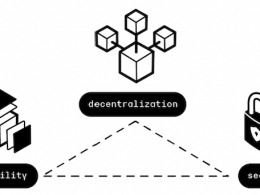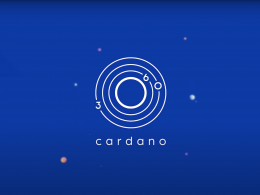
KEY TAKEAWAYS
- Development through Research: Cardano has broken new development ground with an effort that is painstakingly researched and peer-reviewed, focused on creating a blockchain that will be stable and sustainable.
- Efficiency and Sustainability: The outstanding two-layered architecture of Cardano together with the proof-of-stake algorithm ensures high efficiency while environmentally sustainable.
- Growth and Challenges: Its development speed and expansion of the ecosystem may have stumbled along the way, but the future of Cardano depends on how the cryptocurrency can scale up and become more interoperable in the larger blockchain space.
Introduction to Smart Contract Platforms
Ever wondered what it looks like when tech titans are gladiators in an ancient arena? In the world of blockchain, the smart contract platforms are not in contention. They are at loggerheads, sweeping new innovations as weapons in their domination quest. This is not just a simple race of efficiency but a spectacle of strategic might, where each new frontier may well crown a reigning king.

A smart contract is a self-executing program that automates the actions required in an agreement or contract. Once completed, the transactions are trackable and irreversible. These platforms give users the ability to create and deploy smart contracts i.e., programmable, transparent, immutable, and mediator-less agreements. In the galaxy of these giants is Cardano (ADA), taking its stand as one of the contenders looking to be among the frontrunners in this space against the likes of Binance Smart Chain (BSC), Avalanche, Algorand, etc. This article dives full throttle into Cardano, its standout features, the advantages derived, and the challenges one faces during blockchain implementation that gives an overview of the competitive landscape.
The Genesis of Cardano
Cardano is often described as a “third-generation” blockchain, following Bitcoin and Ethereum. It indeed seeks to remedy all the defects made by the two references, at best. Initiated by Charles Hoskinson, Cardano is an open-source platform with a research-first approach. It follows the way forward for modern, sustainable networks that ensure advanced features for the public, keeping network long-term viability and adaptability to check.
The Technical Innovations and Features of Cardano
It is impossible to discuss the innovative ecosystem of Cardano without delving into its foundational principles and underlying operating system.

- Ouroboros Proof-of-Stake (PoS): The Cardano blockchain is secured by Ouroboros, which is a unique design proof-of-stake (PoS) protocol that delivers security with the highest energy efficiency and scalability, combining a variety of incentives and technological mechanisms. Its design enforces high degrees of decentralization, as even very wide participation of nodes is encouraged through the incorporation of a built-in incentive mechanism that enforces honest behavior from all participants. Such stands out in contrast to the other PoS mechanisms, like that of Ethereum 2.0’s Casper, which is a hybrid model transitioning from proof-of-work (PoW) to PoS with emphasis on transaction finality, stake, network duration for validator selection. Other interesting PoS variations include Delegated Proof of Stake (DPoS), which EOS and TRON use and allows more transactions at higher speeds with only a fixed number of elected validators at the cost of centralization risk.
Polkadot’s Bonded PoS requires validators to put up some tokens as a bond to ensure good behavior. Slashing refers to a punishment model for malicious actions. Tezos Liquid Proof of Stake (LPoS) empowers the user through delegation. The holder delegates staking rights without transferring the ownership of the token, hence underlining on-chain governance for the evolution of the protocol. Each of these PoS mechanisms supports given network objectives and requirements of users, which boosts diversity and dynamism within the blockchain ecosystem
- Formal Methods in Development: Cardano sets itself apart through its emphasis on security and reliability. It employs a practice known as formal verification, which is common in fields where mistakes can be catastrophic, like aerospace and nuclear industries. This method involves mathematically proving the correctness of the protocols underlying the Cardano network, ensuring that the system behaves exactly as intended.
- Scalability and Interoperability: With its novel layer architecture, Cardano aims to address the scalability issues faced by earlier blockchains. The separation of computation and settlement layers allows the platform to handle a high volume of transactions and smart contract executions efficiently. Furthermore, Cardano is working on solutions like sidechains to enhance interoperability between different blockchains, which is crucial for the widespread adoption of blockchain technology.
- Decentralized Applications and DeFi: Although much slower in deployment compared to Ethereum, Cardano is setting a scene for some decentrally financed (DeFi) applications, which will offer people an alternative to secure and regulatory-friendly systems of traditional finance.
The Cardano’s Comparative Advantages
- Environmental Sustainability: Cardano PoS mechanism is not more theoretically energy-efficient; in reality, it bestows a way for the burgeoning consideration toward the consequence posed by the current concept to the environment and the potential of this cryptocurrency.
- Advanced scalability solutions: Innovations such as Hydra, a layer-2 scalability solution, will assist Cardano in processing up to 1,000,000 transactions per second. In actual sense, this would be scalable enough to handle global payment systems and many more dApps.
- Governance and Self-Sustainability: The Cardano blockchain has a treasury system integrated that, in a unique way, is designed to fund long-term development through democratic voting via the community of blockchain users.
Cardano vs. The Rest: A Comparative Overview
- Binance Smart Chain (BSC): While BSC boasts high transaction throughput and low fees, its trade-off comes in the form of centralization concerns, which might deter decentralization purists. Cardano maintains a strong commitment to decentralization without compromising scalability.
- Cosmos: Known as the “Internet of Blockchains,” Cosmos focuses on enabling interoperability between different blockchains. While Cardano also aims for cross-chain communication, Cosmos’ Inter-Blockchain Communication (IBC) protocol is specifically designed for this purpose. Cardano, with its layered architecture and emphasis on security and sustainability, offers a more academically rigorous approach but is still developing its interoperability features.
- Algorand: Algorand is recognized for its pure proof-of-stake (PPoS) consensus mechanism, which ensures decentralization and rapid transaction processing. Algorand’s emphasis on immediate transaction finality and scalability is similar to Cardano’s goals. However, Cardano’s focus on a layered architecture and peer-reviewed updates provides a different angle on achieving long-term scalability and robustness.
- Avalanche: Avalanche stands out with its high throughput and low latency, thanks to its Avalanche consensus protocol. It can process thousands of transactions per second and supports multiple subnets for customized blockchain deployments. Cardano, while not yet achieving the same transaction speeds, prioritizes formal verification and a methodical rollout of features to ensure security and sustainability, offering a trade-off between immediate performance and long-term reliability.
The Future Outlook and Positioning
As blockchain technology evolves, Cardano’s place in this dynamic landscape will largely depend on its ability to maintain its rigorous standards while expanding its ecosystem. The forthcoming developments in smart contract functionality and dApp integration will be crucial for Cardano to harness its full potential and solidify its standing as a formidable contender in the smart contract arena.
Cardano’s Ecosystem and Community Initiatives
Cardano is rapidly expanding its presence in the DApp sector with the Alonzo update enabling smart contracts. It supports DeFi, NFTs, and more, focusing on compliance and security to attract institutional and governmental projects. Educational and community initiatives, like partnerships with academic institutions and Project Catalyst, bolster innovation and community engagement.
Summary and Conclusion
This mix of scientific rigor and commitment to sustainability, coupled with advanced technical frameworks, puts Cardano in a class of its own as a differentiating force among smart contract platform battles. While Cardano faces a hard time with tough competition from already established and other upcoming blockchains, with such a thoughtful, slow approach, it might actually redefine the future of decentralized applications and digital agreements.









